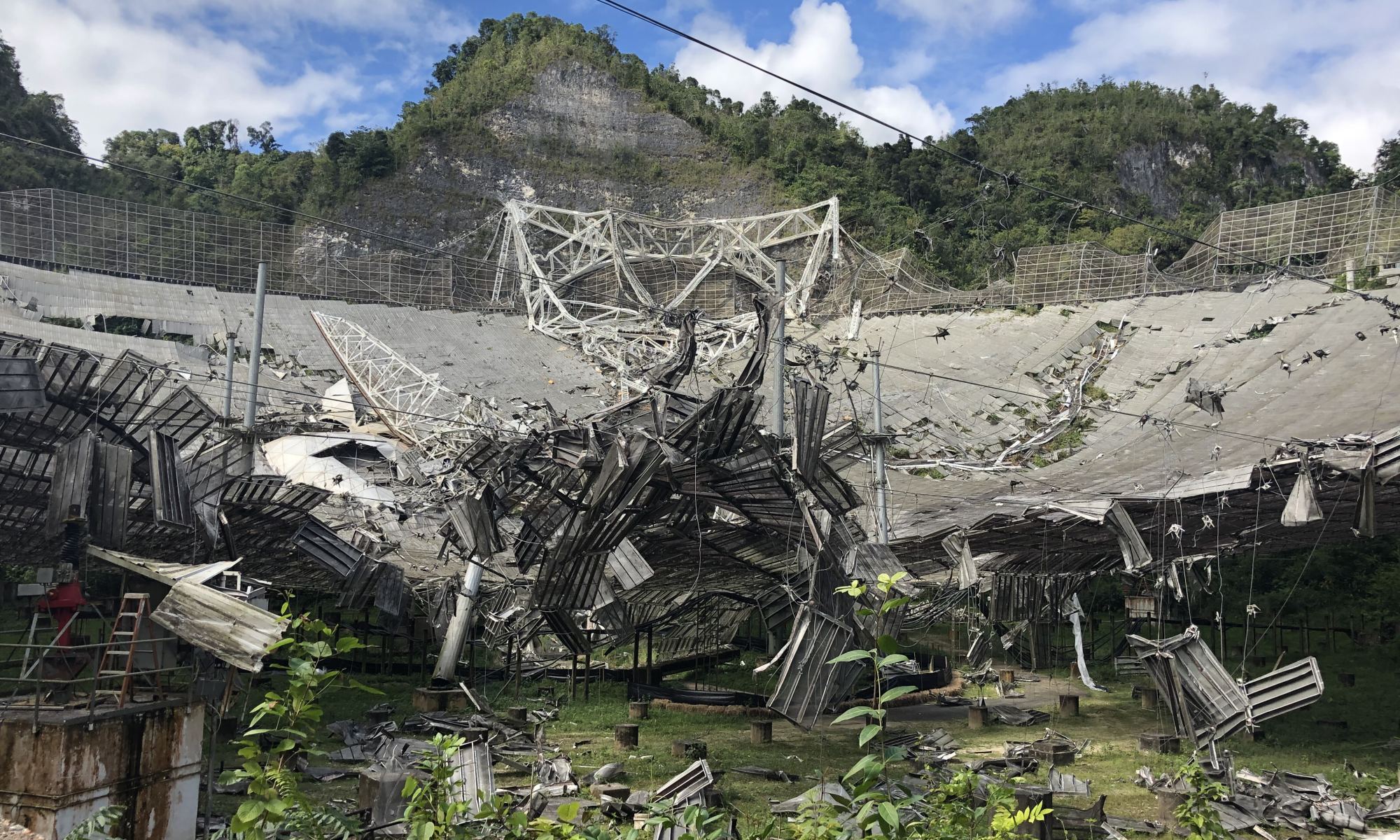Even though the National Science Foundation announced last year that it would not rebuild or replace the iconic Arecibo radio dish in Puerto Rico — which collapsed in 2020 – a glimmer of hope remained among supporters that the remaining astronomy infrastructure would be utilized in some way.
Instead, the NSF announced this week they have chosen four institutions to transition the site from its historic hub of astronomical research to a STEM educational outreach center, with a seeming focus on biology. A biomedical laboratory, Cold Spring Harbor Laboratory in New York along with the University of Maryland, Baltimore County, and the University of Puerto Rico (UPR) and the University of the Sacred Heart, both in San Juan will oversee the new education center.
NSF said they will invest over $5 million in the site over five years to create the Arecibo Center for Culturally Relevant and Inclusive Science Education, Computational Skills, and Community Engagement (Arecibo C3). According to a press release, NSF said the site “will serve as a catalyst for increased and inclusive engagement in a broad range of science, technology, engineering and mathematics disciplines, cutting-edge research and workforce development initiatives by students, teachers, researchers, local communities and the public within and outside of Puerto Rico.” It is scheduled to open in early 2024.
Previously, before the telescope’s collapse, NSF contributed about $7.5 million annually to the operation of the site.

Iconic History
The Arecibo telescope was a 305 m (1,000 ft) spherical reflector radio telescope built into a natural sinkhole and located near Arecibo, Puerto Rico. It was completed in 1963 and for over 50 years (until the China’s Five-hundred-meter Aperture Spherical Telescope (FAST) was complete in 2016) it was the world’s largest single-aperture telescope. It was used in three major areas of research: radio astronomy, atmospheric science, and radar astronomy.
The facility contributed to significant breakthroughs in astronomy and cosmology, including the discovery of the first binary pulsar, the first-millisecond pulsar, and the first exoplanets, along with helping to study asteroids and planets in the Solar System. In addition, the facility has also played an important role in the Search for Extraterrestrial Intelligence (SETI). The observatory has appeared in movies, television shows and more, and is listed on the US National Register of Historic Places.
Issues for the telescope began in 2017 when Hurricane Maria tore through Puerto Rico, shearing off one of the 29-meter (96-foot) antennas suspended above dish, with falling debris puncturing the dish in several places. In early 2020, earthquakes temporarily closing the observatory for safety reasons; then a succession of cable failures ultimately led to the December 2020 collapse of the 900-ton instrument platform suspended above the observatory, which crashed down on the iconic telescope’s giant dish.

Other Options
Since the collapse, many called for the telescope to be rebuilt or for building an even better replacement telescope at the site. A group of astronomers have proposed building a site with 102 13-meter dishes to create a “next generation” Arecibo observatory, arranging them in a fixed circular array 130 meters across. This would be less than half the diameter of the original Arecibo Telescope, but with more than a hundred receivers it would be far more sensitive. It appears that proposal was not considered by the NSF for the Arecibo site.
Still on site are a 12-meter radio telescope — which was recently upgraded — and a Lidar facility, but the NSF has said they will not provide any “operational support for current scientific infrastructure.”
Instead, the NSF decided last year that Arecibo should serve as a hub for STEM (science, technology, engineering and math) education and outreach. That decision came even though recommendations from the Planetary Science and Astrobiology Decadal Survey noted that, “the loss of the Arecibo Observatory planetary radar greatly inhibits the ability to perform follow-up NEO (near Earth object) characterization. Existing radar infrastructure can observe only half the asteroids once observable with Arecibo.”

Several researchers interviewed in an article this week in Nature by Anil Oza said they are disappointed in the decision and doubtful about Arecibo’s move away from astronomy research, which was a source of pride for Puerto Rico. “Without the telescope or any active research on site, Arecibo C3 might struggle to reach as many students as the observatory once did,” Oza wrote.
Planetary astronomer and native Puerto Rican and Edgard Rivera-Valentín told us last year that he was heart-broken by the decision.
“Arecibo’s role in inspiring generations of Puerto Ricans centered on the fact that we had a world-class facility doing cutting-edge science in our home,” said Rivera-Valentín. “When I had the privilege of working at the observatory, as the first Arecibeño scientist to do so, I saw how it continued to serve that important role. But it did so because we were doing great science with the telescope. It did so because scientists at the observatory could be mentors and role models to students. Without the telescope, without the scientists, I don’t personally see how going to the visitor center won’t be like going to a memorial.”
NSF says the STEM education research and skill building will include school field trips and summer camps, professional development in education and data science, interactive exhibits, and public science programs and areas for conferences, workshops, and meetings. The center’s new director, astronomer Wanda Díaz-Merced, has said there will be an exhibit about the historical importance of Arecibo’s astronomy research.

